Tempting Tea Cookies and Snacks You'll Love to Eat
TEATIME NOTES
Find tips, recipes, and articles to increase your delight and enjoyment of tea.
Tempting Tea Cookies and Snacks You'll Love to Eat
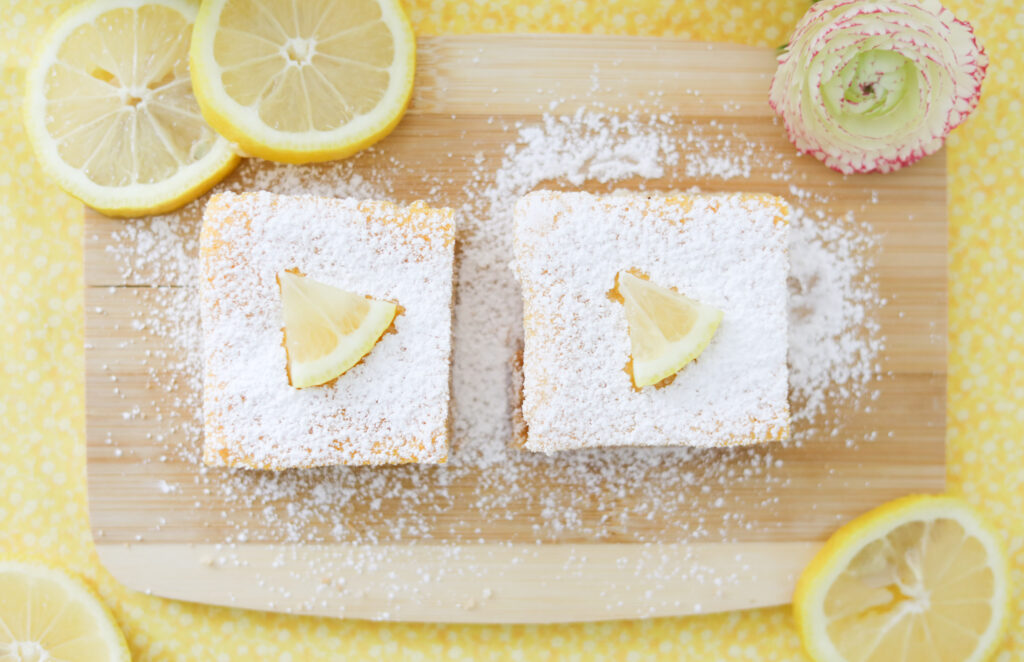
The Most Authentic Tea Time Snacks for a Traditional Tea
By Erika Robertson
You can’t resist the urge to nibble on a treat when sipping a cup of tea. It’s only natural to want a little something sweet or savory to snack on too — it’s almost required that you grab a small snack.
If you like traditional tea snacks you’ll enjoy these treats eaten by folks all over the UK and Ireland. Here are some of the most popular and traditional snacks you’ll want to try with your tea. Let’s start with the most obvious of all the tea time snacks: scones.
Scones
Is there a more perfect pair than tea and scones? These bready treats are cut into small round or triangle shapes and have a crumbly and soft texture. They are sweet or savory — but more often than not they are made on the sweeter side.
Common additions include dried fruit or sweet additions like cranberries, currants, raisins, or chocolate chips. Some savory versions might include ingredients like herbs, cheese, and nuts. The most traditional way to eat a scone is warmed with clotted cream and jam. Whether you put your jam first or your cream first is up to you — but is there a correct way?
Apparently, there are two English counties that are famous for their cream teas. Both Cornwall and Devon have strong opinions about which goes on your scone first: the cream or the jam. Which side do you agree with?
Digestive Biscuits
In 1839, two Scottish doctors invented the first version of a digestive biscuit to help with none other than digestion. The ingredients changed a little since then, and nothing about them really helps with digestion — but they are delicious and taste a lot like a fancy American graham cracker.
In 1892 these biscuits were manufactured by McVitie’s. Today these biscuits are still some of the most popular dunkable treats enjoyed by people around the UK. There’s a very popular version that’s dipped on one side in dark, milk, or white chocolate. You can even pair plain Digestives with cheese and meats for a savory tea time snack.
Victoria Sponge Cake
It’s often called the “Victoria Sponge” and it’s about as old as Afternoon Tea itself. It’s the Duchess of Bedford who is given credit for accidentally inventing afternoon tea while snacking in her quarters between meals. Queen Victoria was a good friend of the Duchess and they would take afternoon tea together. One fine day Queen left her mark on afternoon tea when she requested a raspberry dessert — in the form of a cake!
This cake was a favorite of Queen Victoria who often enjoyed it with her tea thereafter. This light and fluffy two-layered sponge cake is sandwiched with a distinct layer of both jam and either buttercream or whipped cream. Raspberry jam is the signature flavor used for this tea time snack.
Tea Sandwiches
These tiny sandwiches are also called finger sandwiches, and they are a staple of afternoon tea in the UK and Ireland. Like most afternoon tea time snacks, tea sandwiches are meant to be eaten with your fingers and without utensils.
The crusts from these little sandwiches are removed and they are filled with savory fillings to balance out the sweetness of the cookies, scones, and other sweet treats served during tea. Common flavors are egg salad, cucumber, smoked salmon, chicken salad, and ham and cheese.
Battenberg Cake
This cake is a beautiful sight to behold! Its signature checkered pink and yellow interior is encased in a thin layer of marzipan. The pieces of cake are held together with very thin layers of apricot jam which add a touch of beautiful orange to the white, pink, and yellow hues.
This tea time snack is presented whole during afternoon tea and it’s cut up into smaller pieces for each guest during the sweet course. The combination of almond marzipan with the light sponge and sweet apricot jam is a delight. This whimsical cake was first made in 1884 in honor of Princess Victoria and Prince Louis of Battenberg.
Fruit Cake
This dense and moist cake is loaded with dried fruits and nuts and served alongside a hearty pot of afternoon tea. It’s a tea time snack that’s often soaked overnight in tea and some kind of alcohol like brandy or rum. Funny enough, at one point this over-the-top cake was even banned by the English Church for being too decadent — for shame!
This is a hearty cake that’s made to last a long time and it gets better with age. They are exceptionally popular during the holiday season, which is when puzzled Americans see them most often. It's a cake that’s commonly served in small portions so guests aren’t overwhelmed by the intense flavor.
Jaffa Cakes
It’s you’ve been keeping track, you may notice that sponge cake is a common theme in a lot of English tea time snacks — and the Jaffa cake gives a big nod to spongecake too. A soft sponge is dolloped with orange jelly which is then covered with a layer of dark chocolate on one side.
This light spongecake treat is an ideal balance of citrus tang with the sweetness of the sponge and the decadence of the dark chocolate. These cakes were originally named for the Jaffa tangerine oranges that were used in the first versions of the recipes. By the way, a fantastic tea to pair with this treat is Earl Grey.
Chelsea Buns
These old buns were invented sometime around 1700 at the Chelsea Bun House of West London. They look a lot like a cinnamon roll and they’re filled with cinnamon, brown sugar, and raisins or currants. The dough is rolled into a log before being cut into spiral pieces and baked side by side in a baking dish for the ultimate pull-apart ooey-gooey tea time snack.
Some recipes are made with orange or lemon zest and other recipes call for nuts. One thing is certain: these comforting and soft Chelsea Buns are one of the oldest tea snacks that people still seek out regularly today.
Custard Creams
This sweet treat wins the adoration of many a person in the UK and Ireland because of its unique appearance and its delicious taste. They are as beautiful as they are tasty and they make any tea party or casual cup of tea a little more special.
Custard Creams are usually rectangular and stamped with an incredibly intricate design. Two gorgeous biscuits sandwich a layer of custard filling. The strong and vibrant flavors of this biscuit pair exceptionally well with a strong afternoon tea.
Shortbread
This classic Scottish biscuit is buttery and crumbly and a most beloved tea time snack. Shortbread is a melt-in-your-mouth cookie that takes on various shapes and sizes and is sometimes stamped with intricate patterns using cookie molds. Shortbread cookies date back to the 12th century when “short” described something that was “crumbly” and “crisp”. It was originally a twice-baked medieval biscuit bread.
Mary Queen of Scots enjoyed “Petticoat Tales” shaped shortbread — round medallions with a scalloped edge. The Queen was said to have enjoyed caraway seed shortbread in the shape of triangles — to reflect the shape of her skirt. Shortbread was also baked in a sheet pan and cut into rectangles called fingers.
Lemon Drizzle Cake
If you love lemon, this cake is for you. A simple sponge cake is used as the base — no surprise there. But, this sponge is brought to the next level with lemon zest and lemon juice. The lemon gives the cake a rich and fragrant flavor and a beautiful yellow color.
Once the cake is baked, it’s poked with a fork or skewer and soaked with lemon syrup that’s made from lemon juice and sugar. It’s usually finished with a layer of powdered sugar or glazed with a lemon-sugary mixture.
Madeleines
These delicate cookies have a signature shell-like shape and are a beloved staple for afternoon tea time snacks. Madeleines are small and airy and are often flavored with lemon or vanilla, but they can also be dipped in chocolate.
These little cookies came from France in the small town of Commercy. The batter is made with a genoise sponge cake and baked in a mold that gives the cookies their signature shell shape.
Eccles Cakes
These little tea time snacks are also known as “sad cakes” because they collapse during baking and look, well — incredibly sad. But, what they lack in looks they make up for in flavor — they are simply delicious!
They are made of a flaky pastry and filled with dried currants, brown sugar, citrus, and warm spices like cinnamon and nutmeg — ideal flavors for a winter tea party. These are round pastries that are often crimped around the edges. They are convenient little hand pies that are easy to eat and a treat to savor with a nice hot cup of tea.
Rock Cakes
When you see these cakes, you might think they look a lot like scones, but there are major differences between the two. Rock Cakes are not formed and cut into cute shapes like scones are. Instead, they are dropped directly onto the baking sheet which gives them their signature rustic appearance — they look like little rocks.
The texture of the dough is a little tougher than a scone because it’s handled more, and it’s made with self-rising flour, but it’s still deliciously tasty — almost like an American dinner biscuit. They have a little less sugar than scones and Rock Cakes are usually mixed with dried fruit. You can enjoy Rock Cakes on their own, unlike scones which must be served with jam and cream.
Lancashire Parkin
This English gingerbread cake is regularly enjoyed in the fall and winter seasons. It’s also traditionally eaten on November 5th — Guy Fawkes Night. Lancashire Parkin is made with rich ingredients like oatmeal, treacle, golden syrup, spices, and ginger.
This is a cake that needs to sit. There’s no question about it: it’s almost impossible for you to eat it right away. It’s usually baked into a hard cake that softens and becomes sweeter and stickier after a few days. It has a unique texture thanks to the addition of oatmeal.
Teaware as Sweet as Your Tea Treats
How many of these tea time snacks have you had from the UK and Ireland? You can find many of these treats at your local European market. You can also check out some of these recipes for more tea treat ideas.
Make every cup of tea count with teaware that performs as well as it looks. Teabloom offers the widest selection of borosilicate glass teaware on the market. What’s so special about this kind of teaware? — Everything!
Read more about why borosilicate glass teaware is the best in every way, and find a teacup or a tea set that works for you and fits your everyday style.
With Teaboom, you can make every tea moment simply amazing.
Here’s to you!


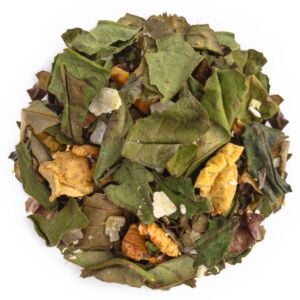
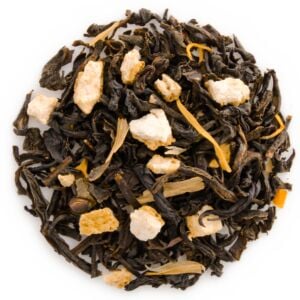
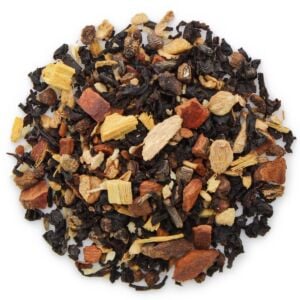
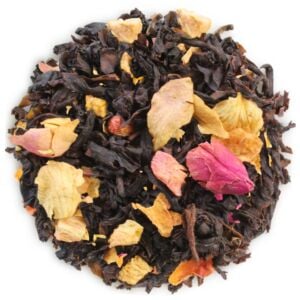
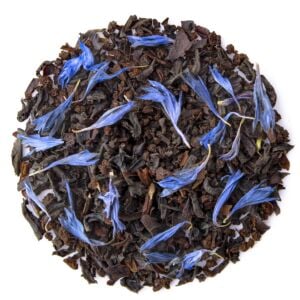
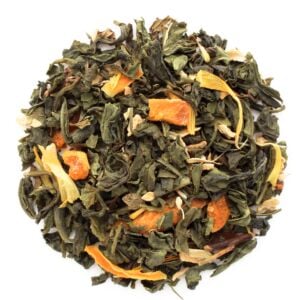

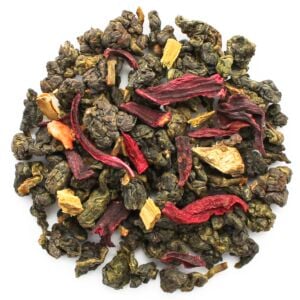
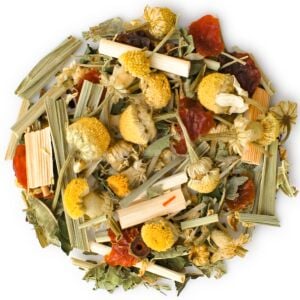
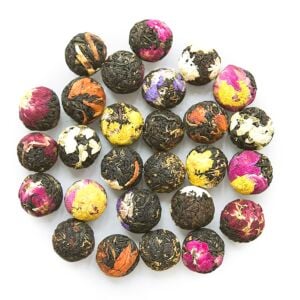





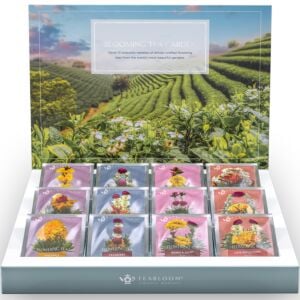
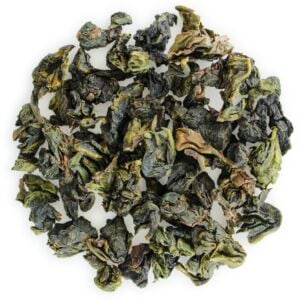

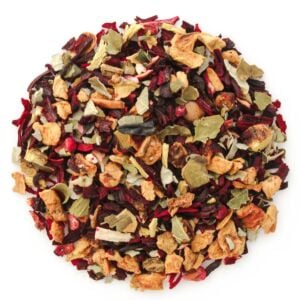
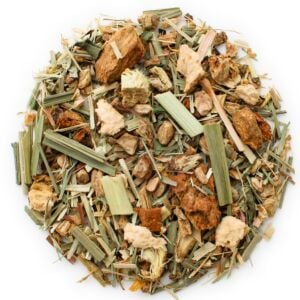
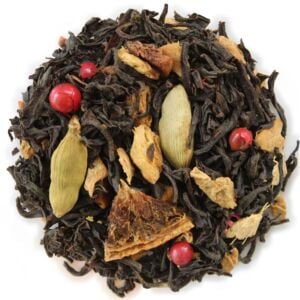
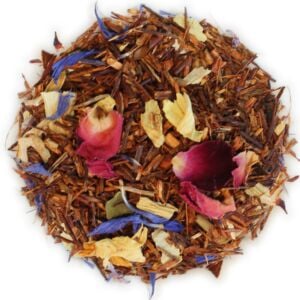
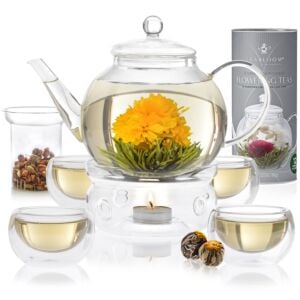

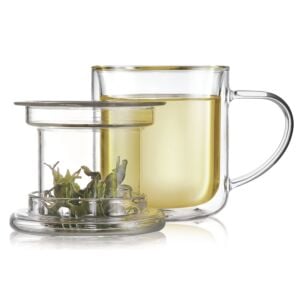
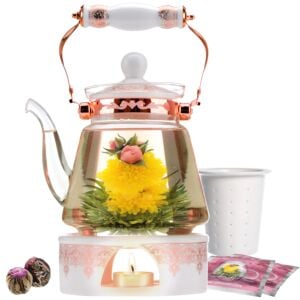
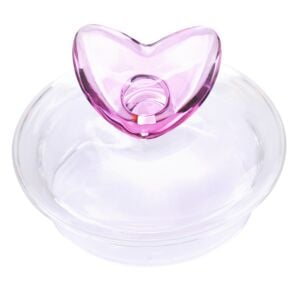
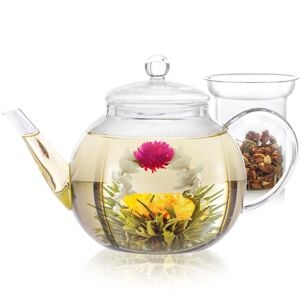
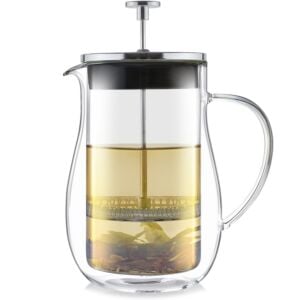

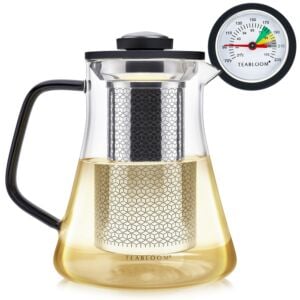



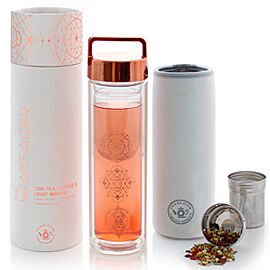

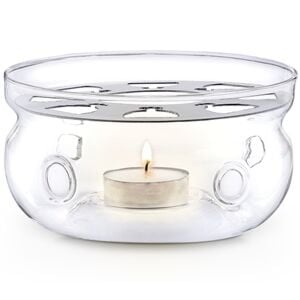

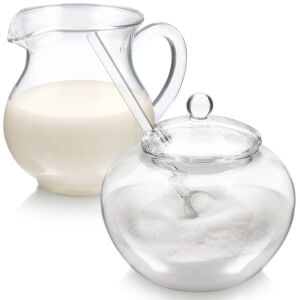
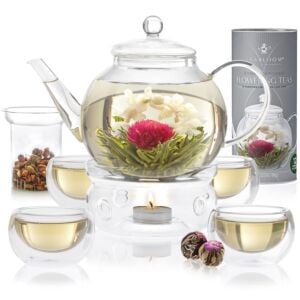

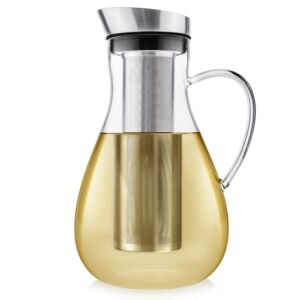
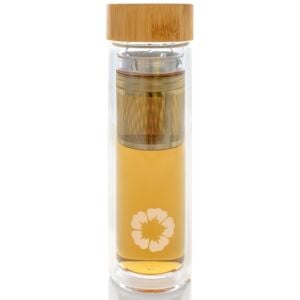
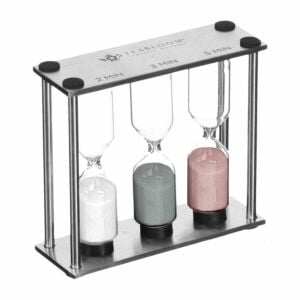
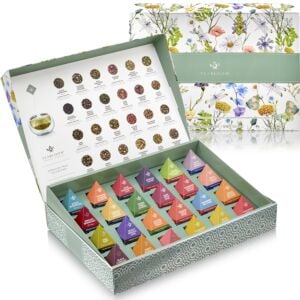
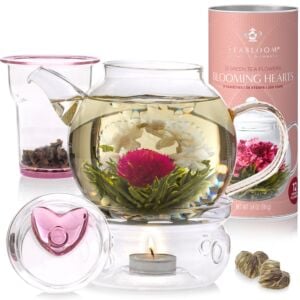

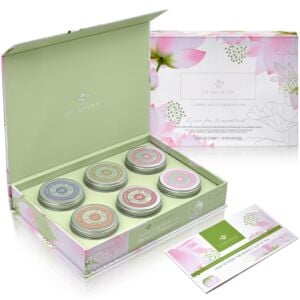
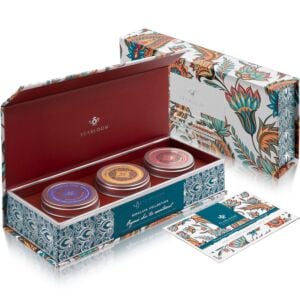
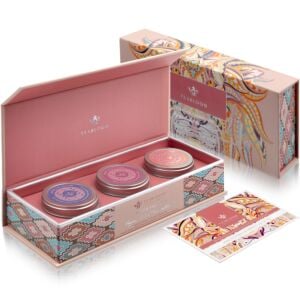
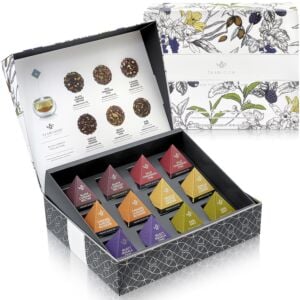



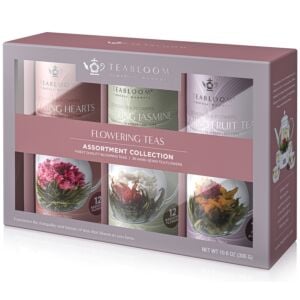
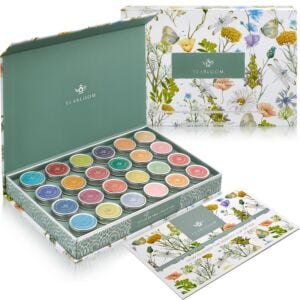
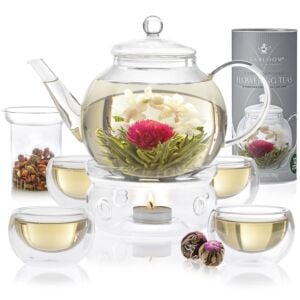
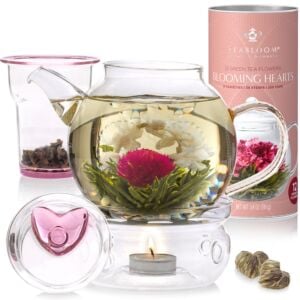
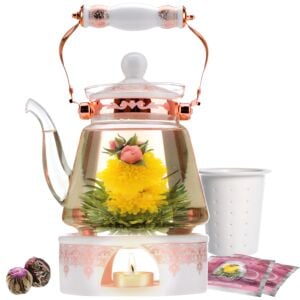
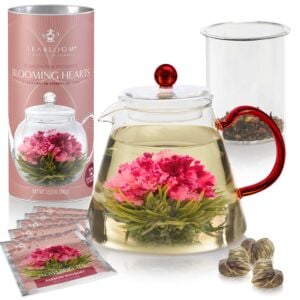

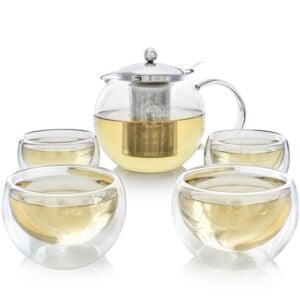
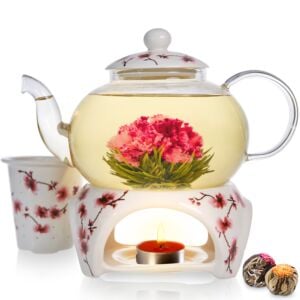
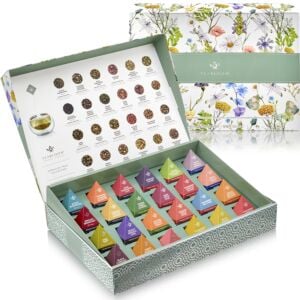
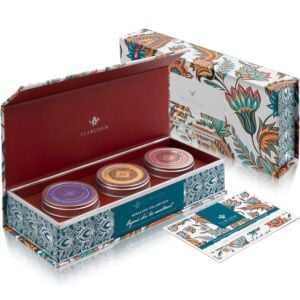
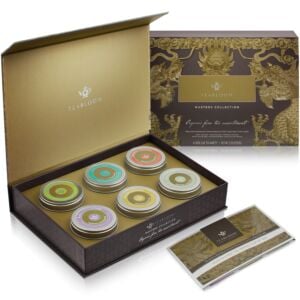
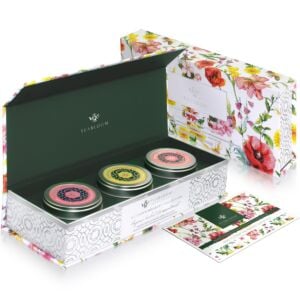
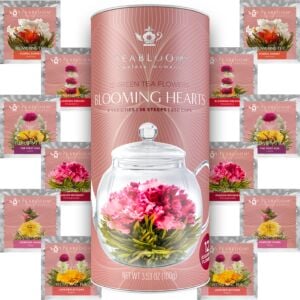

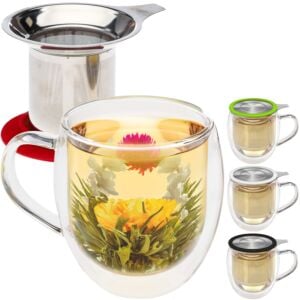
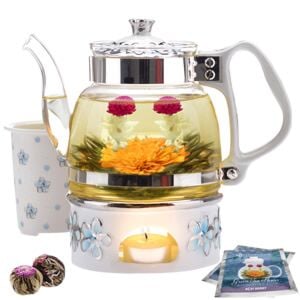

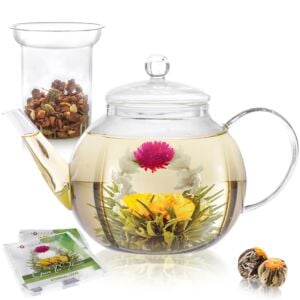
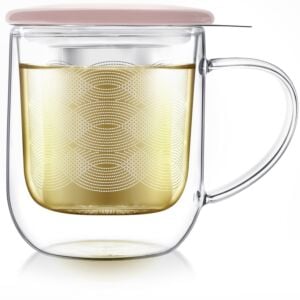
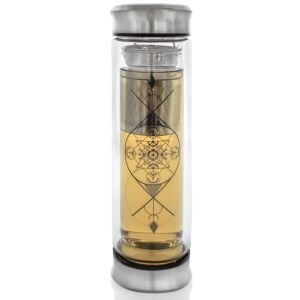
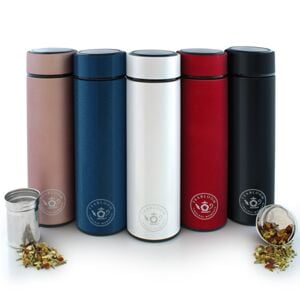

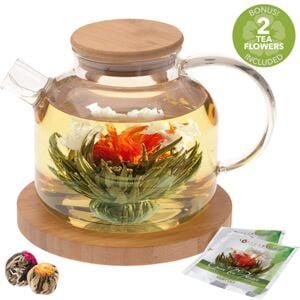
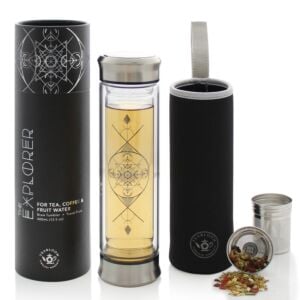
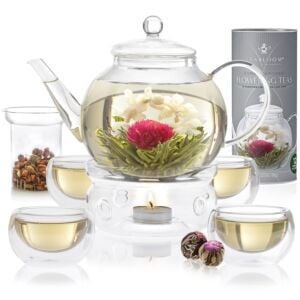
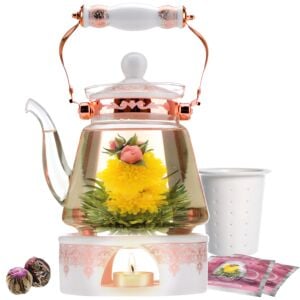
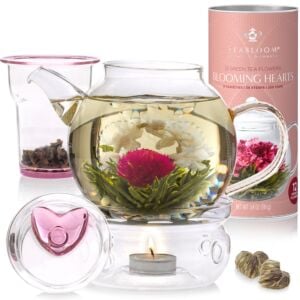
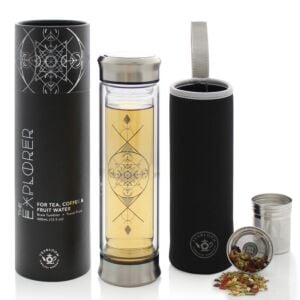
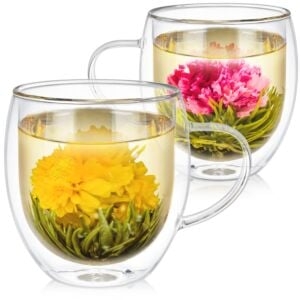
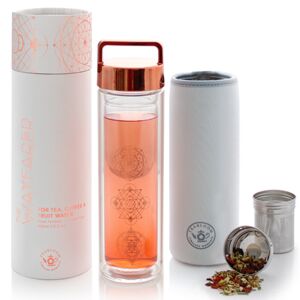
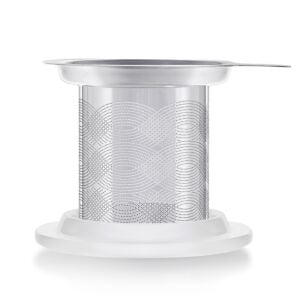
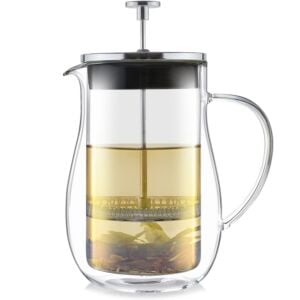
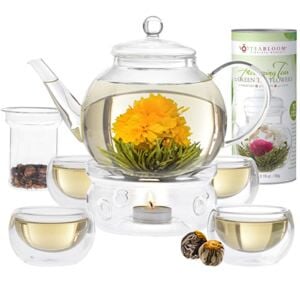
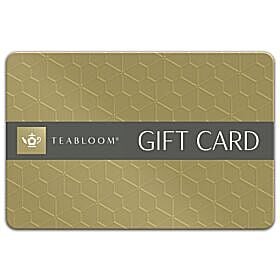



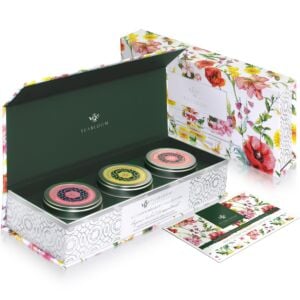
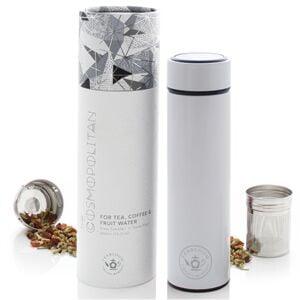


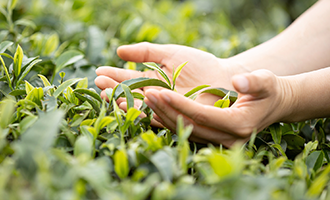
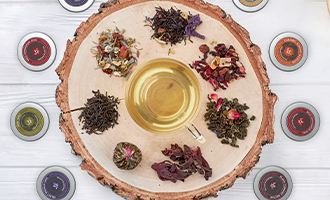




Share your thoughts